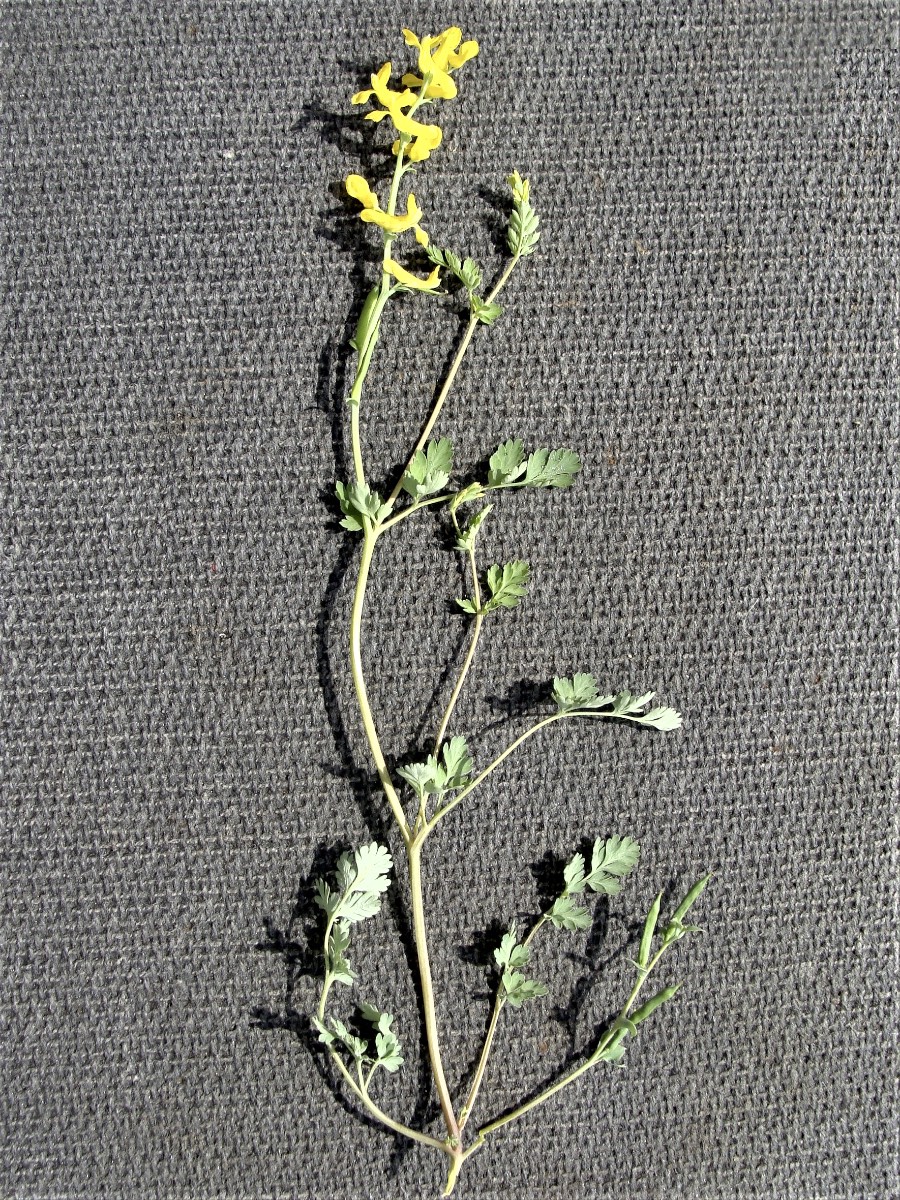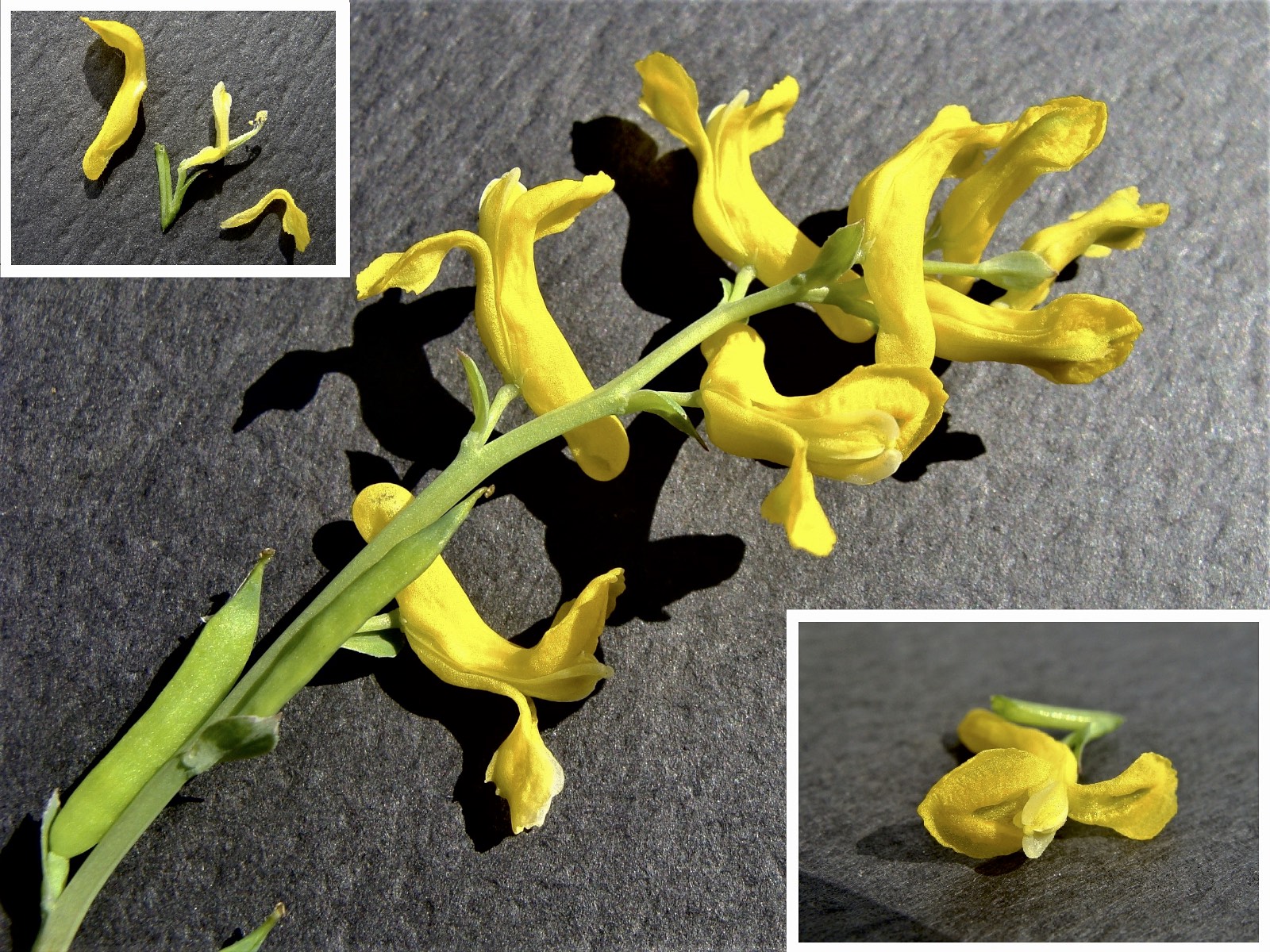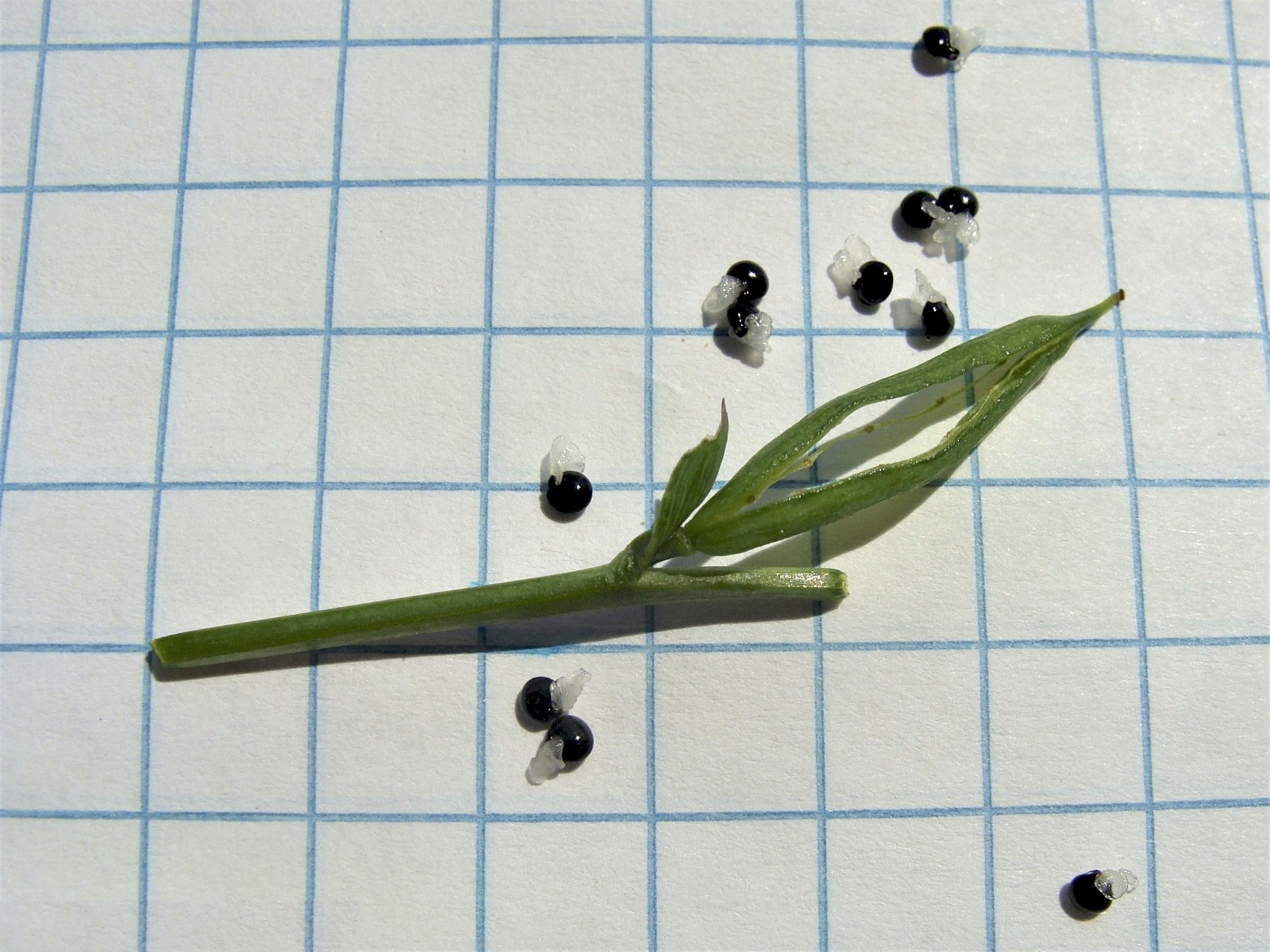Southern corydalis (Corydalis micrantha subsp. australis)* of the Poppy (Papaveraceae) family, formerly of the Fumitory (Fumariaceae) family, is an over-wintering annual that reproduces both sexually (chasmogamous flowers, which are cross-pollinated) and asexually (cleistogamous flowers, which are self-pollinated). In the U.S., it occurs from Texas and Louisiana, north to Kansas and Illinois, and then east along the Coastal Plain from Mississippi to North Carolina. In Arkansas, the subspecies is scattered throughout the Interior Highlands and West Gulf Coastal Plain. The genus name is the ancient Greek name of the crested lark, referring to the spur of the flowers. The specific epithet, also from Greek, means “small flower.” The subspecific epithet is Latin for “southern.” Habitats vary from wooded floodplains, to open woodlands, to waste areas, roadsides and other disturbed areas, frequently in sandy soils.
Plants in late winter have a cluster of basal leaves. With stem growth, compound cauline leaves and axillary leaves become distinguishable. Petioles (leaf stalks) of cauline leaves have a clasping base, a rounded lower surface with a central ridge (a continuation of the stem corner) and a flattened to channeled upper surface. Petioles of axillary leaves are non-clasping and square. Cauline leaves have up to seven leaflets, axillary leaves typically five, arranged sub-alternately along the leaf rachis. Leaflets, ½ to 1 inch long, are deeply incised so that each leaflet has a terminal lobe and a pair of lateral lobes. Incisions of the leaflets result in margins that are crenulated and divided into rounded to short finger-like segments, with obtuse often mucronate apexes. As shown by the photos below, the leaves are lovely and delicate. The largest may be 3½ inches long and 1 inch wide.



Flowering occurs from mid-March into late April. Primary and secondary stems bear both terminal and lateral racemes. To 3 inches long, chasmogamous racemes have up to a dozen flowers with each flower subtended by an acute obovate sessile bract. The persistent bracts, to ⅛ inch long at flowering and ¼ inch at fruiting, have entire margins. Cleistogamous racemes are often fewer-flowered.
Chasmogamous flowers are bright yellow, four-petaled and up to ⅝ inch long and ½ inch high (side view) and ¼ inch wide (front or bee’s eye view). Upper and lower petals have rounded faces and a central sharply depressed area expressed abaxially as a sharp keel. In side view, the upper petal extends sharply backwards, paralleling the lower petal, before rising slightly to form an inflated, round-tipped nectar-spur. The nectar-spur extends about ¼ inch beyond the pedicel (flower stalk). The flower’s corolla is slightly longer from the pedicel forward than backward to the tip of the nectar-spur.
Flowers also have a matched pair of lateral petals that are pressed together at the flower’s center to form what appears to be a rounded up-flared single petal. The combined lateral petals envelop a short style (atop an elongate ovary) and stamens that tightly surround the ovary. The two-lobed stigma is barely exposed at the flower center. The lateral petals are about ¼ inch long.

Cleistogamous flowers bear very different petals. Upper and lower petals are significantly smaller than those of chasmogamous flowers, do not flare outward, and lack a nectar-spur. Diminutive lateral petals envelope anthers and stigma so that self-pollination occurs.

As flowering extends upward in the raceme, the ovaries quickly develop into bean-like, erect capsules as the raceme elongates to 6 inches or more. The 3/4-inch long or slightly longer capsules, beaked by a persistent style, from chasmogamous and cleistogamous flowers, have the same appearance. Each capsule comprises two valves enclosing a single locule or cell. Each of two placentas on the inner walls of the capsule, extending from base to apex, bear a single row of alternating seeds. While still green, capsules dehisce along two sutures to release about 15 shiny, black, dimpled, flattened-ovoid seeds, each measuring less than 1/16-inch across. The seeds carry a small, fleshy, clear-gloppy structure at their base called an elaiosome. Elaiosomes are ant food: seeds are transported to the ants’ nest where elaiosomes are eaten and the seeds themselves discarded–a remarkable but not uncommon dispersal mechanism.

Three other species or subspecies of the genus are found in Arkansas. Mealy corydalis (Corydalis crystallina) has ovaries and fruit that are covered in a gray or white mealiness. Mealy corydalis is usually found in prairies, often concentrated on prairie mounds. Pale or yellow corydalis (Corydalis flavula) has smaller, usually paler yellow flowers and fruit that hang downward on long pedicels. Pale corydalis is usually found in riparian forests or other moist forests and woodlands. Small-flower corydalis (Corydalis micrantha subsp. micrantha) has shorter, fewer-flowered, chasmogamous inflorescences that are not held well above the leaves, as well as shorter and stouter fruits (under 6/10 inch long). Small-flower corydalis is apparently very uncommon in the state and is reported to grow on bluffs and rocky hills, on glade margins, and in riparian forests.
* Some recognize this plant at the species level, as Corydalis halei.
Article and photographs by ANPS member Sid Vogelpohl

